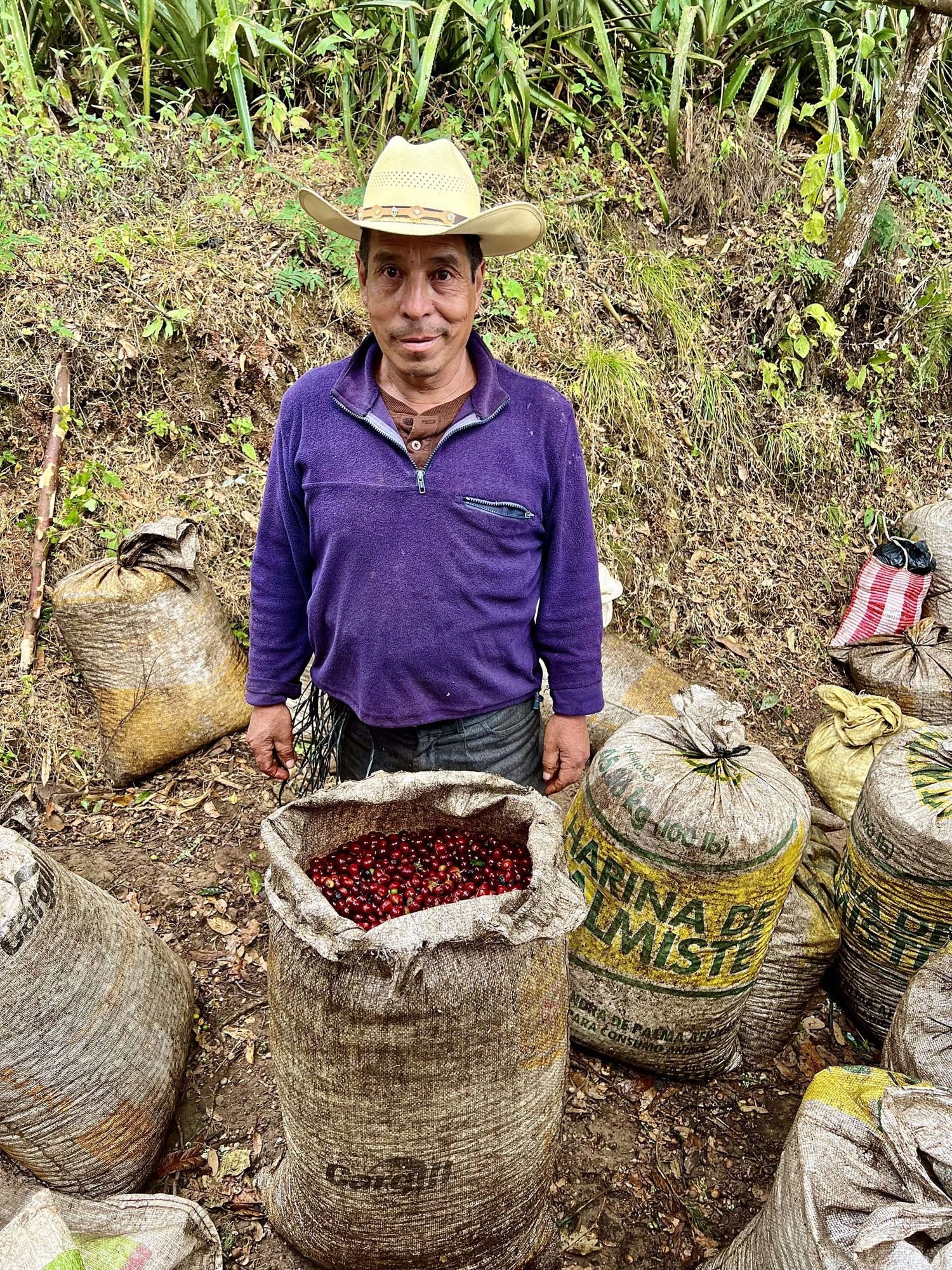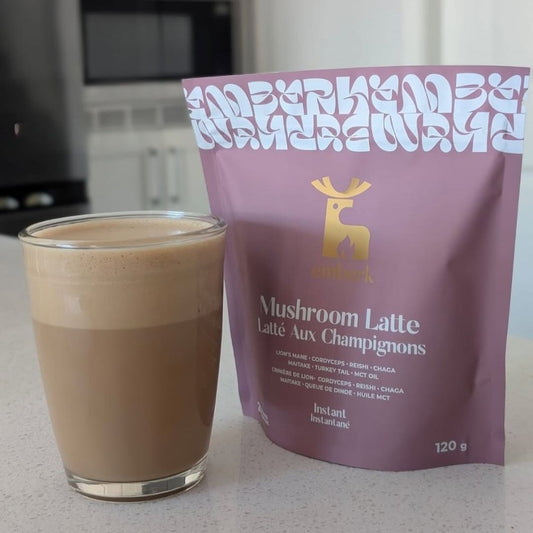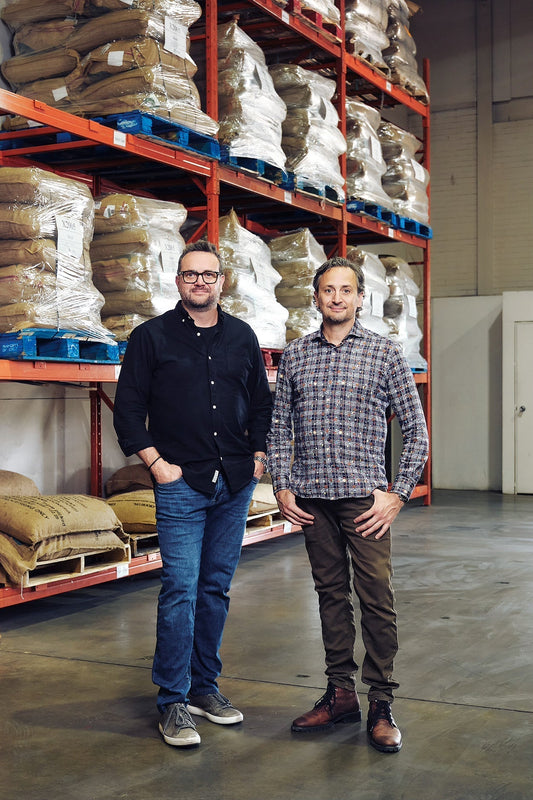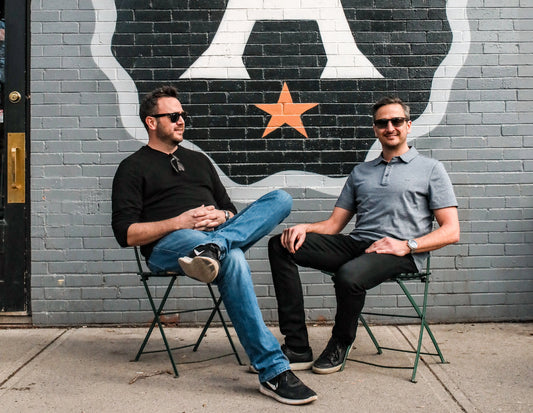Antigua, Guatemala | Sourcing Trip and Direct Trade Process

Bright red cherries hanging off of shady coffee trees are a beautiful sight for coffee enthusiasts. But that wasn’t what brought Russ Prefontaine to Antigua, Guatemala this past February. The Fratello Coffee president and co-owner has been sourcing coffee at origin for the past 17 years, and he’s seen it all. At this point, he’s after one thing: great coffee.
In conversation with Russ Prefontaine, president and co-owner of Fratello Coffee, about his most recent sourcing trip to Guatemala

But great coffee isn’t just about flavour; it starts with great people. We sat down with Prefontaine to chat about his most recent origin trip to meet the producers at San Miguel Coffees in Antigua and check out their coffee farm. He was impressed with what he saw, and tasted.
Apart from producing some of the world’s best coffee, Antigua, Guatemala is a popular tourist destination. It’s a Unesco World Heritage site, with wonderfully preserved Spanish colonial architecture. In Antigua, you’ll find enchanted cobblestone streets with candy-coloured buildings, ancient church ruins, views of the surrounding volcanoes, and the ever famous pastel-yellow Santa Catalina Arch. Not to mention, incredible authentic culinary favourites, like tamales, sopas and caldos (soups and stews), fried plantains, and spiced mangoes to name a few.

Prefontaine got to bring his two children, aged 8 and 10, along for the ride. When he wasn’t busy cupping coffee and observing the operation of the farm, he was taking his kids to enjoy the essential tourist sites, like riding up the volcano on horseback and roasting marshmallows over red-hot lava.
But tamales and marshmallows aside, Prefontaine was on serious business. He spoke about the ethos behind visiting the origin and meeting the producers, what he looks for, and what direct trade looks like to him. A healthy coffee community not only puts care and passion into growing and processing, but takes great care of its farmers.
Fratello Coffee: Why is it important to you to visit the origin before purchasing?
Russ Prefontaine: I visit origins when I want to start establishing relationships. When I start getting more serious about sourcing larger volumes of coffee, I want to really find out who they are as business people. I consider coffee a very important business, and I want to work with people who see it the same way. The producers are passionate, they’re knowledgeable, they’re educated.

FC: Why do you have direct relationships with these producers? Why don’t you just entrust a third-party importer to the job of sourcing? Why do you have to see it with your own eyes?
RP: You can look around and see the overall organization, the cleanliness. Are they taking care of the environment? Are they taking care of waste water, the trees? How does everything look? We can have conversations about their overall operations, if they have programs within their operations that benefit their employees. Do the people look happy? I get an idea of who they are and if they are running the operations in a way that we can trust working together and get a consistent product.

I like to see education programs where the producers have schooling systems on their farms. Because these farms are very remote, accessing education is almost impossible for the people that live around there. Schooling is mandatory, but not always enforced. What you might see in coffee growing communities is that families aren’t encouraging their kids to go to school because they don’t have a way to get them there. So when you’re driving around the towns near the farms, what are you seeing? Do they have any services? Do the people look healthy? Is there a store around there? What is there for them?
I like to see healthcare programs. San Miguel has a dental clinic and a healthcare centre right on their facility. So you start to see differences between producers who are truly investing in the people and the community to improve it. My job is to support the people who are doing that. I have the choice. I can work with nice people!

I feel great about who we’re buying from. They’re taking care of any wastewater and environmental issues that they can. And the coffee tastes great! When everything’s working together, I say, “Now I consider you a direct trade partner.” But it doesn’t happen in a year. It’s a very long process to build that trust.
Anyone can just throw “Direct Trade” on their bag. All you have to do is fly down there and take a couple of pictures, and there you go.

FC: Do these producers face any of the common hardships of coffee producers, ie. leaf rust, financial difficulties?
RP: Every year there’s something. In Brazil last year, they had huge floods followed by frosts that they’ve never had so bad. This year, winter season is just starting in Brazil (end of May), and already they have had mild frost damage. Last year it destroyed approximatly 30% of their coffee harvest. Within Central America, more and more, leaf rust is showing up at higher elevation, which is unique. Initially it was just a lower elevation where it was really warm. But what that’s showing is that the overall temperatures are increasing, creating the possibility for rust to enter a higher elevation. So that really affects the coffees that roasters like us are purchasing. In addition, fertilizer costs have sky-rocketed more than 3 times the regular price this year alone.



